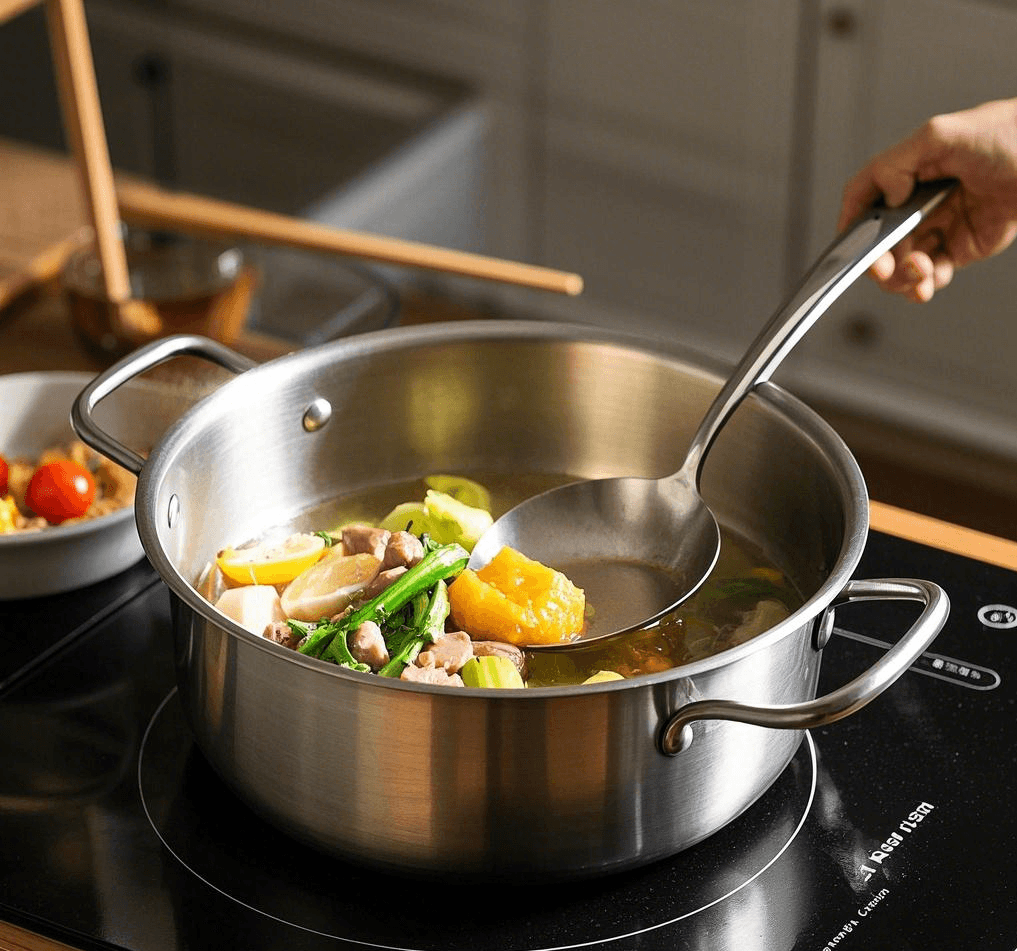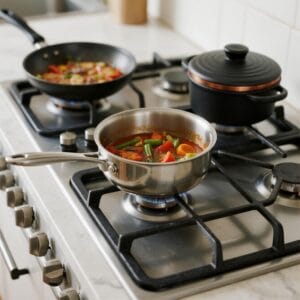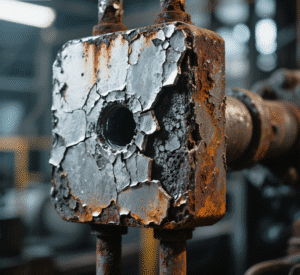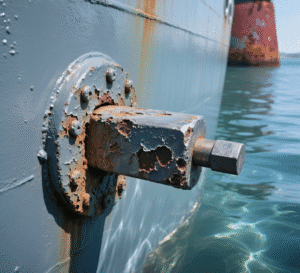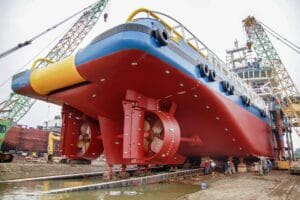Choosing a Dutch oven feels overwhelming with so many materials available. Making the wrong choice can lead to poor cooking results or a pot that’s hard to maintain.
The "best" Dutch ovens are typically made from enameled cast iron for excellent heat retention and easy care. Bare cast iron is very durable but needs seasoning. Tri-ply stainless steel offers a modern, low-maintenance alternative with good performance. Ceramic is lighter but different.
Finding the right pot depends on how you cook and what you value most. Over the years, I’ve tried all kinds of cookware—aluminum non-stick, granite-coated, cast iron, and stainless steel. In the end, stainless steel wins for durability and reliability for me. Lately, I came across tri-ply clad material 1, which really takes premium cookware up a notch. Many people I know have switched to tri-ply stainless steel pans because they’re tough, heat evenly, and are simple to clean 2 3. Let’s look closer at the materials used for Dutch ovens.
What material makes the best Dutch oven?
It’s hard to know which material cooks best for your needs. You might worry about spending money on a pot that doesn’t perform well. Let’s break down the top choices.
Enameled cast iron is often considered the best overall material for its blend of heat retention and user-friendliness. Bare cast iron is great for durability and searing. Tri-ply stainless steel provides excellent, even heating and easier handling 4.
The ideal material really depends on your priorities. Do you want maximum heat retention for slow cooking, or do you prefer something lighter and easier to clean?
Cast Iron (Enameled and Bare)
Cast iron is the classic choice. It heats slowly but holds heat incredibly well, making it perfect for braises, stews, and baking bread.
- Enameled Cast Iron: This is cast iron coated with enamel. It doesn’t require seasoning, is easier to clean, and doesn’t react with acidic foods. The downside is the enamel can chip if mishandled.
- Bare Cast Iron: This requires regular seasoning to build a non-stick surface and prevent rust 2. It’s extremely durable and develops character over time. It’s often less expensive than enameled versions.
Stainless Steel (Especially Tri-Ply)
Stainless steel Dutch ovens are less common but gaining popularity, especially high-quality tri-ply versions 3. These have an aluminum core sandwiched between layers of stainless steel 1. This construction provides the durability and non-reactivity of stainless steel with much better heat conductivity and distribution than basic stainless steel 4 5. They are lighter than cast iron and don’t need seasoning 2.
Ceramic
Ceramic Dutch ovens are much lighter than cast iron. They often have non-stick interiors 6 and come in various colors. However, they generally don’t retain heat as well as cast iron and can be more prone to cracking from thermal shock or impact.
| Feature | Enameled Cast Iron | Bare Cast Iron | Tri-Ply Stainless Steel | Ceramic |
|---|---|---|---|---|
| Heat Retention | Excellent | Excellent | Good to Very Good | Moderate |
| Heat Speed | Slow | Slow | Fast | Moderate to Fast |
| Weight | Heavy | Heavy | Medium | Light |
| Maintenance | Easy (no season) | Needs Seasoning2 | Easy | Easy (handle gently) |
| Durability | Very Good (chip?) | Excellent | Excellent 1 | Good (crack risk) |
| Price | Med-High | Low-Med | Med-High | Med |
What are the best quality Dutch ovens?
Want a Dutch oven that performs beautifully and lasts for decades? Worried about ending up with one that chips easily or cooks unevenly? Knowing the signs of quality helps.
High-quality Dutch ovens show excellent craftsmanship: thick, even material (cast iron or multi-ply) 1, smooth and durable enamel (if applicable), tight-fitting lids, sturdy handles, and often come from reputable brands with good warranties.
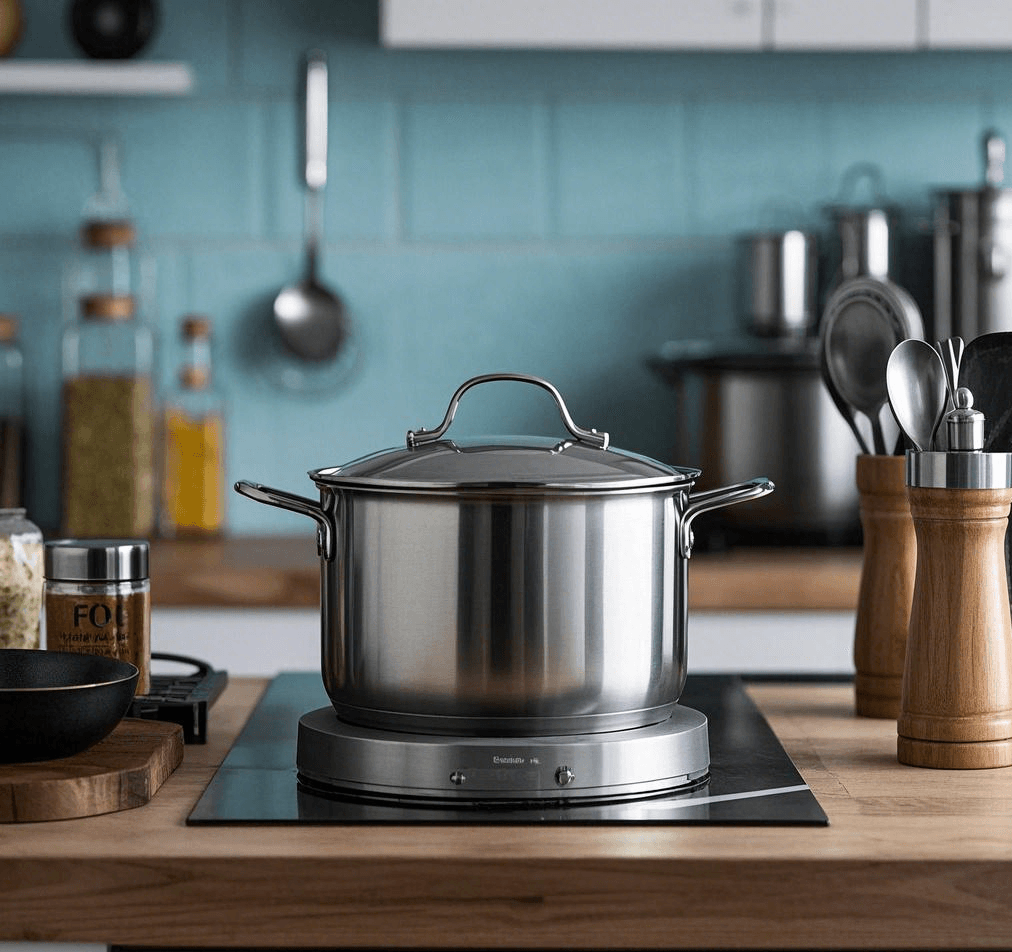
Quality isn’t just about the brand name, although that often correlates. It’s about the materials used and how well the pot is constructed.
Material Thickness and Weight
For cast iron, look for thick, heavy walls and base. This ensures even heating and excellent heat retention. For tri-ply stainless steel, quality construction means the layers are perfectly bonded 1 for optimal heat transfer without warping 4.
Enamel Coating (If Applicable)
If choosing enameled cast iron, the enamel should be smooth, even, and free of pinholes or bubbles. High-quality enamel is more resistant to chipping and staining. Multiple layers of enamel usually indicate better quality.
Lid Fit and Design
A heavy, tight-fitting lid is crucial for trapping steam and heat. Look for lids that sit securely without wobbling. Some lids have self-basting spikes underneath, which can be a nice feature.
Handles and Knobs
Handles should be large enough to grip securely, even with oven mitts. Oven-safe knobs (metal or high-temperature composite) are essential if you plan to use the Dutch oven at high temperatures.
Brand Reputation and Warranty
Established brands often have a long history of quality control and customer service. A good warranty (especially a lifetime warranty against manufacturing defects) is also a sign the company stands behind its product.
Is a ceramic or cast iron Dutch oven better?
Stuck deciding between traditional, heavy cast iron and lighter ceramic? Unsure which one really fits your cooking style and kitchen needs? Let’s compare them directly.
Cast iron is better for heat retention, searing, and durability, making it ideal for slow cooking and high heat 2. Ceramic is better if you prioritize lighter weight and potentially non-stick surfaces 6, but it may retain less heat and be less durable.
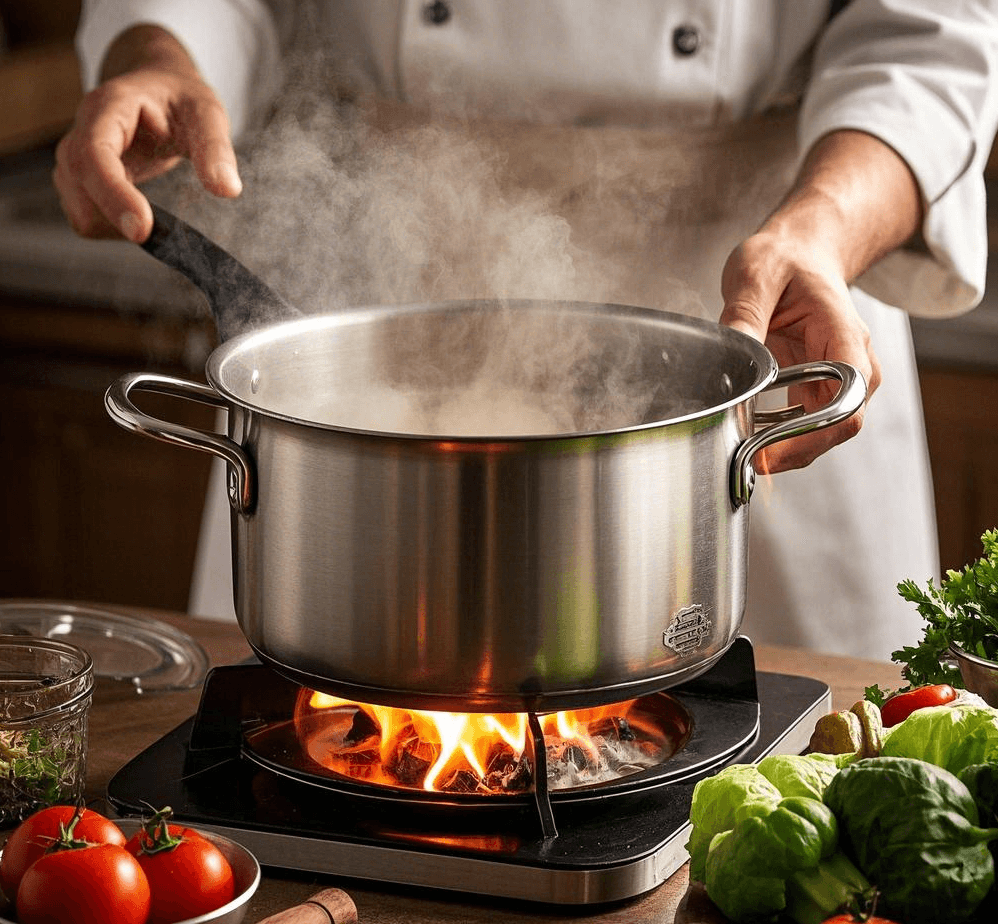
The choice hinges on what qualities are most important to you. Both can produce great meals, but they work differently.
Heat Performance
Cast iron (both bare and enameled) excels here. It heats slowly but holds onto heat for a very long time, providing steady, even temperatures perfect for long braises, stews, soups, and baking crusty bread. Ceramic heats up faster but also cools down faster, meaning it doesn’t retain heat quite as well. This might require more careful temperature management during long cooks.
Weight and Handling
This is a major difference. Cast iron is significantly heavier than ceramic 2. If lifting heavy pots is difficult for you, ceramic offers a much lighter alternative that’s easier to move from stovetop to oven to table.
Durability and Maintenance
Bare cast iron is incredibly tough but requires seasoning 2. Enameled cast iron is easier to care for but can chip. Ceramic is generally easy to clean (often dishwasher safe), but it’s more brittle than cast iron and can crack or shatter if dropped or exposed to sudden temperature changes (thermal shock).
Cooking Applications
Cast iron’s heat retention makes it superior for deep searing and achieving dark crusts. Ceramic is good for casseroles, baking, and general cooking where extreme heat retention isn’t the top priority.
| Feature | Cast Iron (Enameled/Bare) | Ceramic |
|---|---|---|
| Heat Retention | Excellent | Moderate |
| Searing | Excellent | Fair to Good |
| Weight | Heavy | Light |
| Durability | Very High (Bare) / Good (Enam) | Moderate (Risk of cracking) |
| Maintenance | Seasoning (Bare) / Easy (Enam) | Easy |
| Price | Low-High | Medium |
| Best For | Slow cooks, searing, bread | Casseroles, lighter dishes |
What Dutch ovens are not made in China?
Looking specifically for Dutch ovens manufactured outside of China? Perhaps you prioritize country of origin for quality perception or other reasons? Several well-known brands produce elsewhere.
Many premium Dutch oven brands manufacture primarily in Europe (especially France) and the USA. Notable examples include Le Creuset (France), Staub (France), and Lodge (USA – for their classic cast iron line).
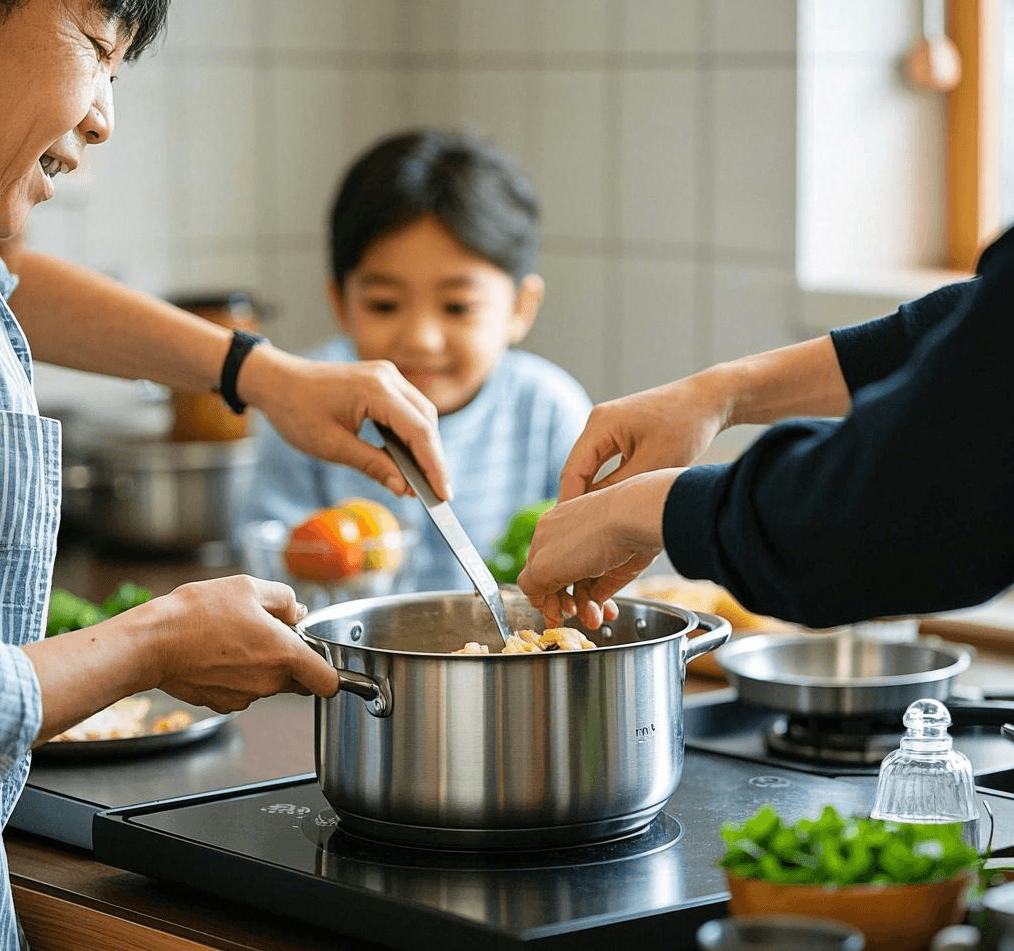
Understanding where products are made can be important for some buyers. While high-quality manufacturing exists globally, certain countries have long-standing reputations for specific types of cookware.
Manufacturing Hubs: France and USA
- France: This country is famous for high-end enameled cast iron. Brands like Le Creuset and Staub are globally recognized and still produce their cast iron cookware there. Their reputation is built on generations of craftsmanship.
- USA: Lodge has been making bare cast iron cookware in Tennessee for over a century. Several newer, premium cast iron brands focusing on artisanal quality, like Smithey Ironware and Finex Cast Iron Cookware Co., also manufacture in the USA.
Why Origin Matters to Some Buyers
Buyers might seek non-Chinese products due to perceived differences in quality control, support for domestic or regional economies, concerns about labor practices, or geopolitical factors. Sometimes, it’s simply loyalty to a heritage brand associated with a specific country.
Checking Specifics is Key
It’s important to note that even brands known for manufacturing in one country might source components or produce certain product lines elsewhere. Always check the product description or packaging for the specific "Made In" information if country of origin is a deciding factor for you. High-quality materials, like the tri-ply circles we supply 3 1, can be expertly manufactured in China and used by brands globally.
Conclusion
Choosing the best Dutch oven material depends on your needs: cast iron for heat, tri-ply for balance, ceramic for weight. Quality signs include construction and brand. Origin varies, with France/USA known for premium options.
Describes tri-ply structure (stainless-aluminum-stainless) and its resulting durability, resistance to warping, and suitability for high heat compared to aluminum. Source: https://triplycircletitanium.com/how-does-the-lifespan-of-tri-ply-cookware-compare-to-aluminum-cookware/ ↩ ↩ ↩ ↩ ↩ ↩
Compares tri-ply to cast iron, noting cast iron’s heat retention, slow heat-up, maintenance needs (seasoning), and heavy weight. Source: https://triplycircletitanium.com/why-triply-cookware-material-is-superior-to-single-layer-and-other-cookware/ ↩ ↩ ↩ ↩ ↩ ↩ ↩
Highlights tri-ply circle cookware’s benefits like heat distribution, durability, and suitability for various cooktops. Source: https://triplycircletitanium.com/choosing-the-best-cookware-material-which-option-fits-your-cooking-style/ ↩ ↩ ↩
Compares tri-ply to cast iron, carbon steel, and copper for high-heat cooking, noting tri-ply’s faster heating and even distribution compared to cast iron. Mentions tri-ply’s non-reactive surface and durability. Source: https://triplycircletitanium.com/which-cookware-material-is-better-for-high-heat-cooking/ ↩ ↩ ↩
Discusses tri-ply suitability for high heat, comparing it favorably to cast iron in terms of heating speed and evenness, and confirms its compatibility with various cooktops and lack of need for seasoning. Source: https://triplycircletitanium.com/which-cookware-material-is-better-for-high-heat-cooking/
Mentions ceramic-coated pans as non-toxic choices. Source: https://triplycircletitanium.com/what-is-the-healthiest-cookware-to-use/ ↩ ↩

